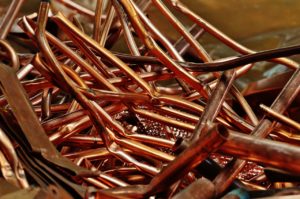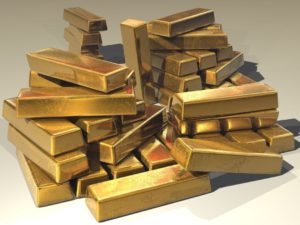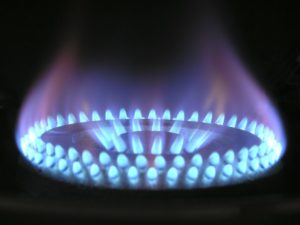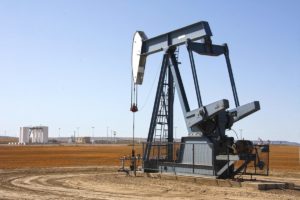Table of contents
Copper is a chemical element and a rather soft metal that is used in many ways in industry. If you want to participate in the development of the copper price, you do not have to buy the metal in physical form or trade a certificate on the stock exchange. Another option is to trade a copper CFD. CFD trading is a modern form of investment in various values. It is risky, but it also promises high profits within an extraordinarily short time.
Uses for copper
Copper has an important significance in industry. It was the first metal used by humans many thousands of years ago. Since it is a weakly reactive heavy metal, copper is one of the semi-precious metals. It has good properties as it is soft, pliable and malleable. It has good electrical and thermal conductivity. It is significantly less expensive than precious metals such as silver, gold or platinum.
If you want to participate in the price development of copper, you can do so with a CFD. The metal is not bought, but in CFD trading only a prediction is made about the possible price development.
Copper is one of the coinage metals and is used for the production of coinage materials. The gold colored parts of the euro coins are made of an alloy of copper, tin, zinc and aluminum.
Due to its appearance and softness, the metal is widely used in arts and crafts. It can be made into art objects such as sculptures or vases. It is formed by hammering into copper sheet, which is used for covering roofs. Such roofs are characterized by a long service life. The durable green patina that forms on the roofs protects against corrosion. The metal is also used for copper engravings and etchings.
Copper is used in many ways in the electrical industry due to its excellent electrical conductivity. It is used for electrical lines, power cables, circuit boards and switching wires, but also for components such as terminals, contact carriers or anode carriers. Although aluminum is less expensive, it does not have as high a resistance to bending fatigue as copper. Due to its high fatigue fracture resistance, it is suitable for wires and cables subject to high mechanical stress.
Since the metal is characterized by high thermal conductivity and corrosion resistance, it is used for mounting plates of line semiconductors, for heat sinks and heat exchangers.
In gastronomy, copper is used as cookware as well as for cutlery. It is also used in the manufacture of musical instruments. As it shows a high reactivity in the infrared range, it is used for coating insulating glass and as a mirror for carbon dioxide laser beams.
The excellent properties and uses make copper interesting for CFD trading. Traders can also trade many other commodities as CFD.
Deposits of copper and deposits
The content of copper in the earth's crust is about 0.006 percent. In the frequency of chemical elements in the earth's crust, the reddish-brown metal is in 23rd place. In its pure form (native), it is found in about 3,000 locations around the world. The world's largest deposit of native copper was found in the USA, on the Keweenaw Peninsula in Lake Superior.
Copper mining already took place there in pre-Columbian times. In Germany, copper slate was mined in the Mansfeld region until 1990. Copper has also been detected in a native form in rock samples from the Mid-Atlantic Ridge and from the Moon.
Chile is the most important copper producer in the world. Australia and Peru also have significant copper reserves and are expected to play a major role on the copper market in the coming years.
With 5.7 million tons of copper, Chile is by far the largest copper producer in the world. Only at a distance and with 2.2 million tons of copper does Peru follow in second place. The other competitors on the copper market China, USA and Congo are far behind with about 1.4 million tons.
Factors influencing the copper price
Anyone who wants to trade CFDs with the underlying asset copper should know the factors influencing the copper price. When trading CFDs, it is important to estimate whether the price will rise or fall. If you want to trade commodity CFDs, you need to know the price driving and price lowering factors. Just as in commodity trading in general, the price depends on supply and demand. The price of copper is mainly formed on major commodity exchanges and commodity futures exchanges. The price on these exchanges is also used for CFD trading. The most important copper market is the London Metal Exchange.
Supply shortage
Demand for copper is rising, leading to increased mining and a shortage of supply. The more the natural resources decrease, the more the price increases. However, in CFD trading, the shortage of supply is not the only factor driving up the price.
A shortage of copper arises on the one hand due to dwindling reserves. On the other hand, a supply shortage can also arise due to a lack of mine production and thus increase the copper price in the short term.
Natural disasters and strikes
Natural disasters and strikes can also drive up the price of copper, which must be taken into account when trading CFD. Production is restricted if, for example, there is flooding in the mining areas. If the miners or the workers in copper processing go on strike, this drives the price up.
Growth markets
The main drivers of copper prices are the growth markets, which include China and India with their rapidly growing economies. Copper is needed for the expansion of infrastructure, but also in industry. As one of the most important industrial metals, the copper price is heavily dependent on demand from the emerging markets
Housing market in the USA
Price-driving factors also include the housing market in the USA, where copper is needed for power lines, installation accessories and other construction equipment.
Electromobility
Electromobility will continue to grow very strongly in the future. On average, an electric car contains 3 times as much copper as a car with an internal combustion engine. Thus, an electric car contains 40-70 kilograms of copper. The shift to electromobility will increase the demand for copper enormously. This means that the price of copper will rise as a result of this increased demand.
Renewable energies
Climate change is forcing mankind to change its global energy production. Fossil fuels are increasingly being replaced by regenerative energy sources. Thus, the number of wind turbines and photovoltaics will grow strongly in the coming years and decades.
A single wind turbine contains about 25 tons of copper. In terms of output, that is 8 times as much as a generator in a coal-fired power plant. This increased consumption of copper will drive up demand and thus also the price of copper.
Recycling
Recycling is an important price factor that should not be neglected. If the copper price rises too high, alternative production of copper becomes interesting and profitable. This also includes recycling.
Copper recycling is sometimes complex and expensive and is therefore only worthwhile above certain prices. The higher the copper price rises, the more copper is produced through recycling. This increases the supply of copper on the world market and thus causes prices to fall.
Supply outages
Particularly in South America, where many countries mine copper, supply shortfalls can occur due to the political situation, but also due to labor and environmental factors. They lead to rising prices. Political unrest in the producing countries and interruptions in the supply chain are an important factor influencing copper prices to rise in the short term.
Slower economic growth
If the economy grows more slowly, less copper is needed. This leads to falling prices. The production of electrical components and also residential construction are then cut back. As copper is one of the most widely used industrial metals, the copper price is also strongly dependent on the global economy and economic growth.
Substitution
One of the price-reducing factors is substitution. If copper prices rise, a substitute is sought. New technologies are developed to find a substitute. If there is an equivalent, cheaper substitute, prices fall.
Influence of seasonality
When trading commodities, seasonal influences on the copper price, among others, may occur and thus also affect the copper CFDs. Seasonality is much more pronounced for agricultural commodities such as coffee or cotton. Seasonality is significantly weaker for metals.
There is a tendency in the copper charts that the copper price shows weakness in the summer and tends to fall. This is probably due to the fact that in Europe and North America are summer vacations and also some shutdowns in the industry.
Copper price forecast: How will the copper price develop until 2025?
Anyone who wants to trade commodities should also look at the long-term forecast for the price. The metal is used in many industries and the price of copper is considered an early indicator of economic development. As before, China, India and other emerging markets are considered to be growth markets, where the demand for this metal is constantly increasing. The growing demand for electric cars and for renewable energies could also ensure increased demand for copper.
If we look at copper production in recent decades, we notice an almost exponential increase in copper production. This is not least due to the advancing digitalization of our society.
Advertising:
Klicken Sie auf den unteren Button, um den Inhalt von marketools.plus500.com zu laden.
Risk note Plus500: 82% of CFD retail investor accounts lose money.
What are the options for copper to trade?
Those who wish to trade copper can invest in exchange-traded commodity certificates on the metal. It is also possible to trade in shares of companies involved in the extraction or processing of the metal.
More and more popular is trading CFD on copper. Trading is done at a CFD broker. In this way, investors can also trade other commodities without physically owning the commodities. Trading is done on rising prices (long) or on falling prices (short).
Commodity trading with CFD involves trading with leverage. With leverage, large amounts of capital can be moved, which is why only a small margin is deposited as a stake. Leverage can lead to high profits, but also to high losses. Standard leverage is 1:10 with 10 percent margin or. Trading of copper CFDs is possible from Monday to Friday from 0:00 to 23:00.
The most exciting copper shares
Copper shares are shares in companies that are involved in the mining of copper or supply the necessary equipment for this purpose.
Among the most exciting copper stocks is that of Rio Tinto, a UK-based company founded in 1873. The shares of the metal exploration company are listed on various stock exchanges. The share price has risen sharply since 2015.
The BHP Group share is also exciting. The company is based in Australia and the United Kingdom and can report sales of more than 44 billion US dollars. The share has shown a remarkable performance since 2015.
Advantages of trading with copper CFD
CFD trading on copper offers some advantages:
- Investors can already trade with small amounts
- Trading with leverage possible
- Copper is not acquired in physical form
- Speculate on rising and falling prices
- Trading hours for copper CFDs are very long
Risk note Plus500: 82% of CFD retail investor accounts lose money.
Plus500 risk note: CFD are complex instruments and come with the high risk of losing money quickly because of the leverage effect. 82% of retail investor accounts lose money trading CFDs with this provider. You should consider whether you understand how CFD work and whether you can afford to take the high risk of losing your money.










